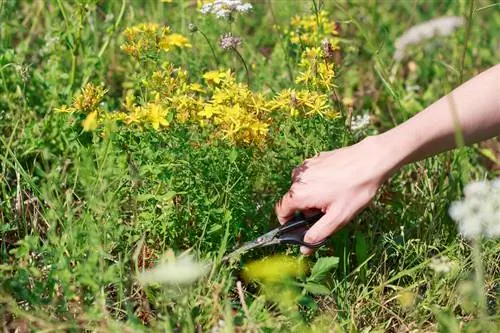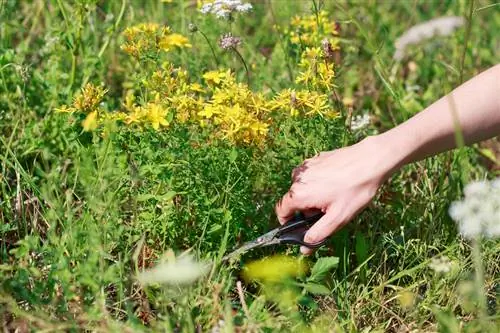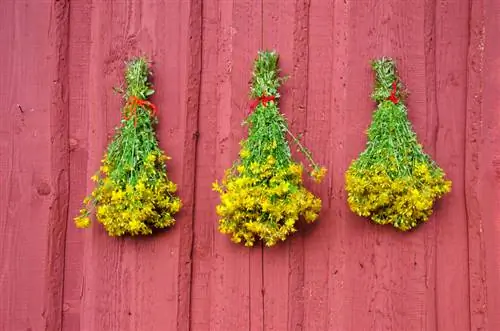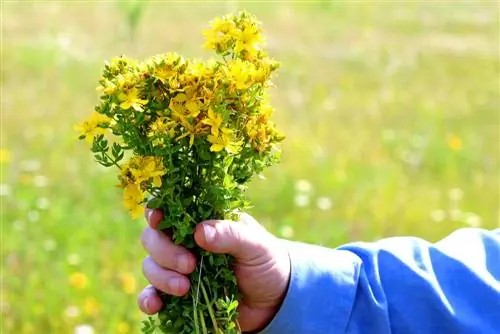- Author admin [email protected].
- Public 2023-12-16 16:46.
- Last modified 2025-06-01 06:02.
Many perennials and trees grow better and remain he althier if they are pruned regularly. What about St. John's wort? Does this plant absolutely need pruning and under what conditions does pruning make sense?

Is cutting St. John's wort recommended?
Pruning back St. John's wort makes sense to create space for new shoots, stimulate budding and remove dried shoots. The ideal time for vigorous pruning is between March and April, making sure to use clean and sharp garden tools.
Reasons that may speak for a cut
You decide whether it is necessary! There are various reasons why it can make sense to cut St. John's wort or a St. John's wort bush. Here are some of them listed:
- remove wilted flowers
- preparing for winter
- Stimulate budding
- Gain cuttings
- harvest
- Get cut flowers
- Remove frozen back
- Keep growth in check (cut away runners)
A strong pruning - do it in spring
Basically, it is recommended to cut back St. John's wort heavily every spring. The shoots from the previous year look unsightly and dried out in spring. In order to create space for the new shoots and promote budding, the old shoots are removed. Pruning is also advisable for evergreen and woody species, at least if some parts are frozen.
The ideal period for this pruning is between March and April. Of course, you can also cut St. John's wort in late autumn. But then winter protection is appropriate to protect the roots from moisture.
How is the cut done?
You should pay attention to this:
- cut back wilted leaves and stems
- feel free to cut down to 5 to 10 cm
- ground-covering species such as St. John's wort can also be cut with a lawnmower
- make sure that no new shoots are removed
- use clean, sharp secateurs (€14.00 on Amazon)
Cut off old flowers or leave them to collect seeds
St. John's wort can also be cut in mid-summer, immediately after the flowering period. This cut is used to remove the wilted flowers. As a result, no fruits and seeds can develop. This saves St. John's wort strength.
However, if you want to get seeds, you must leave the flowers or at least a few of them on the plant. The seeds are ripe in autumn and can be sown either immediately or in spring.
Cutting the herb to harvest it
If you want to cut St. John's wort in order to harvest the plant parts, you should ideally do so during the flowering period. Either cut off just the flowers or the entire herb. The plant parts can then be used fresh, for example for tea, or dried.
St. John's wort as a cut flower
A well-cared-for St. John's wort with strong flower stalks is also suitable as a cut flower. The best way to do this is to cut the stems to within 10 cm of the ground. The berries can also be cut off in autumn to decorate arrangements.
Tip
Even if St. John's wort is affected by diseases such as rust or St. John's wort wilt, it should be cut. All diseased parts are removed.






